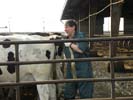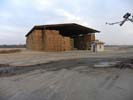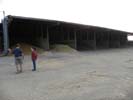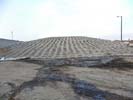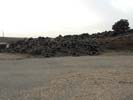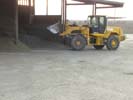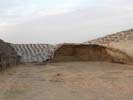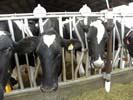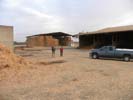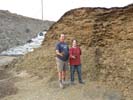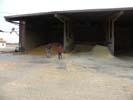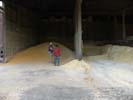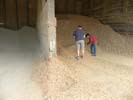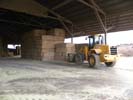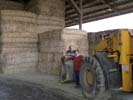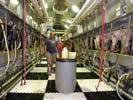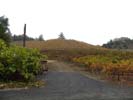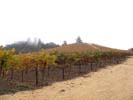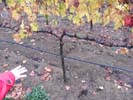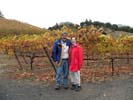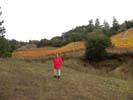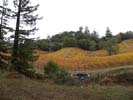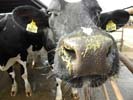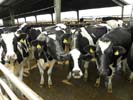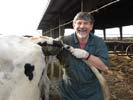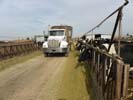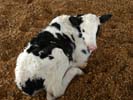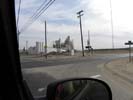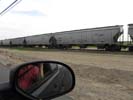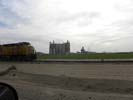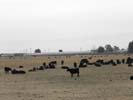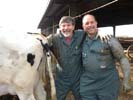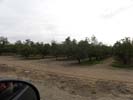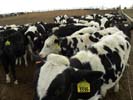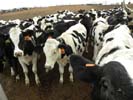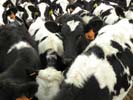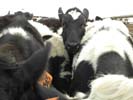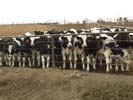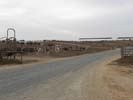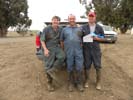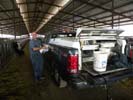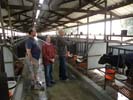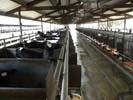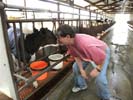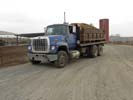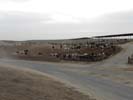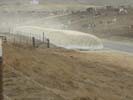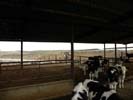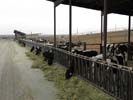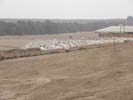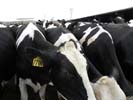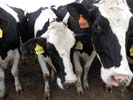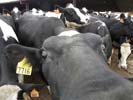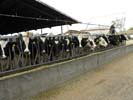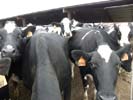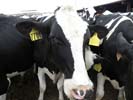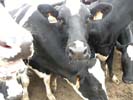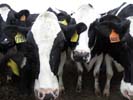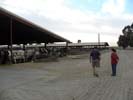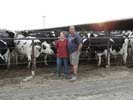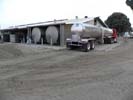Where Milk Comes From
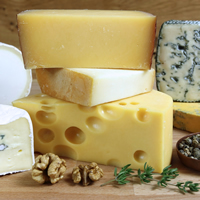
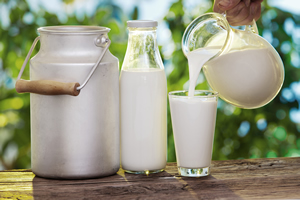
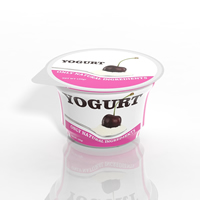
Companion Animal Practice
My gig is companion animal practice. That means my practice is limited to the medical, surgical, and preventive care of companion animals. Now, in my case, companion animals is limited to dogs and cats (of course), plus a myriad of small mammals, plus the occasional monkey, and the occasional buffalo. This is enough to ‘keep me off the streets’ - as my mother used to say (my mother had more sayings than ‘Carter had pills’).
It sounds corny, but as far as I can remember as a child (1st or 2nd grade), I have also been fascinated by and enjoyed animals. I don’t know why. We did not live on a farm, nor did we raise animals of any sort.
I would have enjoyed veterinary practice on/with all sorts of animals. But that is just not the way to go, for a bunch of reasons, and certainly not in New Jersey. While in Veterinary School I arranged for me to do a 6 week externship at the Bronx Zoo. And as it turned out my mentor, Dr. Emil Dolensek, was subsequently recognized as a giant and a ‘father’ in the field. When I was there, a photographer was with us for weeks photographing what he did. Hence my picture and name appear in the book that was written. I worked with a lot of different animals – a whole lot. And in those days, he let me do a lot of ‘hands on’ work. An incredible experience I remember and think about to this very day.
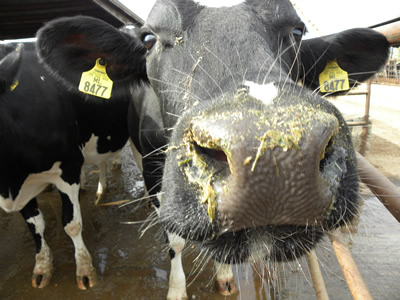 Sooo, I thought about being a zoo veterinarian. But no, not very likely and practical at that time.
Sooo, I thought about being a zoo veterinarian. But no, not very likely and practical at that time.
And again, certainly not in NJ.
Almost Equine
Then I decided I wanted to be an equine veterinarian. I had taken an additional equine rotation in school with this thought. But I had not grown up in equine ‘culture’. A very big issue. You needed to know and to have lived the culture. Nonetheless, and none of my friends or family knows this,
(I don’t think Wendy knows this), but right out of school I applied for an equine veterinary job, here in NJ, and I actually got the job. But I decided it was not the way to go – so I turned the job down.
Hence I started with companion animal practice – in Washington DC, of all places.
Cows
I love cows. Always have. Do you know cows? Have you ever met a cow? Have you ever kissed a cow? I have – right on the wet nose. How can anybody not love cows. I am told cows are not very bright. So what. Who cares & no big deal. They are sweet and they are gentle – despite their prodigious size. Once you have really met a cow, you cannot help but like her.
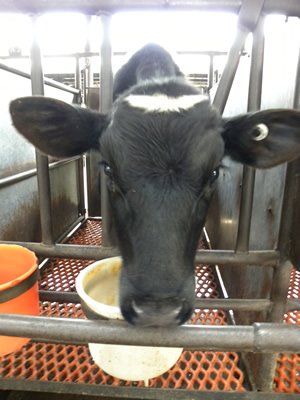
Doctor Bob
So, to this day, I just enjoy all sorts of animals. And that is how I got to this adventure. I have a dear friend, a veterinarian, Dr. Bob. We have known each other for a long time. He is a bovine veterinarian - talented, caring and passionate. He works in California in one of the largest bovine practices in the United States. Whenever we talk, usually by phone, we often talk cows. I ask him all sorts of questions about cows and about bovine practice, and Dr. Bob very patiently answers all my questions. He is a very smart guy, and he always teaches me a lot.
Dr. Bob also gives of himself to the profession in a benevolent way. He works & travels in volunteer fashion at a national level for the American Veterinary Medical Association (AVMA) to help set standards & protocols to help the profession select & educate the best possible young veterinarians. In this way the American public is best & well served. Dr. Bob is a very good guy.
Our San Fran Trip
Wendy & I took a trip to San Francisco and the wine country, so I asked Dr, Bob if I could spend a day with him doing rounds with him. He happily agreed, and so we did. What a great day. One of the many endearing qualities about Dr. Bob, is that he loves ‘his’ cows, and he is very gentle and kind while working with them.
Some Cow Info
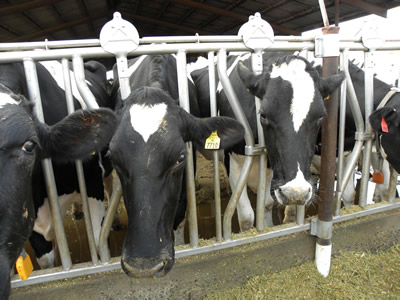 Milk comes from cows. And cows live on dairy farms. American drinks a lot of milk, so we need a lot of cows to make that milk. By far the most common dairy cow is the Holstein. This is so because it is the largest dairy cow (as opposed to beef cow). Holsteins are black & white (almost always, but sometimes red & white). Holsteins average 1500 pounds – but can go up to 1800 pounds. That’s a big moo cow.
Milk comes from cows. And cows live on dairy farms. American drinks a lot of milk, so we need a lot of cows to make that milk. By far the most common dairy cow is the Holstein. This is so because it is the largest dairy cow (as opposed to beef cow). Holsteins are black & white (almost always, but sometimes red & white). Holsteins average 1500 pounds – but can go up to 1800 pounds. That’s a big moo cow.
Another breed of milk cow is the Jersey. These are much smaller, and they are desirable because their milk is high in fat & protein. Hence their milk is often used for the production of butter (high fat) and for the production of cheese (high protein).
California
California is our biggest milk producing state. New Jersey has about 8,000 milk cows (and
31,000 beef cows). California has 1.8 million milk cows (and 5.3 million beef cows).
Most of the large Californian farms are family owned, starting back from the early 1900s.
The San Joaquin Valley is the largest milk producing area both in California and in the U.S.
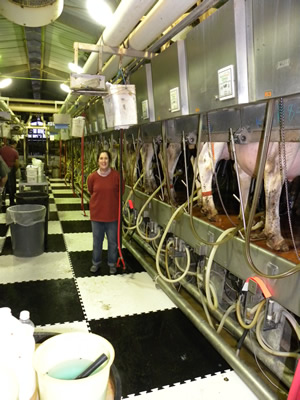 California is just a huge agricultural state. It has about 450 agricultural ‘commodities’. Animal wise it is particularly big in: cows (dairy & beef), turkeys, broilers (young chickens - about 1 billion/year), eggs, chickens (broilers & layers), pigs, goats, & squabs. Crop wise it is particularly big in: almonds, grapes, walnuts, pistachios, sweet potatoes, & water melons. California is #1 in diary, #2 in almonds, and & #3 in broilers & grapes.
California is just a huge agricultural state. It has about 450 agricultural ‘commodities’. Animal wise it is particularly big in: cows (dairy & beef), turkeys, broilers (young chickens - about 1 billion/year), eggs, chickens (broilers & layers), pigs, goats, & squabs. Crop wise it is particularly big in: almonds, grapes, walnuts, pistachios, sweet potatoes, & water melons. California is #1 in diary, #2 in almonds, and & #3 in broilers & grapes.
Milk Science & Agribusiness
You would think, would you not, that most of the milk produced is used for milk to drink.
Well – it ain’t so. Milk use breakdown: 40% to milk, 40% to cheese production, & 20% to other (butter, yogurt, etc.) Rather interesting.
These large farms practice ‘vertical integration’- that is, they must be predominantly self-sufficient. Virtually everything is recycled and reused. All fluids and waste from the cows go to a ‘lagoon’, which is a water filtration system. It separates the water from the solids. Everything is reused. Nothing is wasted.
Milk production is not measured in gallons – it is measured in pounds. One gallon of milk weighs 8.6 pounds.
The average milk cow produces milk for about 3 years, and then is sold for meat. A high producing cow can produce as much as 12 gallons (about 100 lbs./day) per day. The average cow produces about 70,000 lbs. per life time. But this number can go as high as 300,000 pounds. That would be about 23,000 – 30,000 lbs. per year.
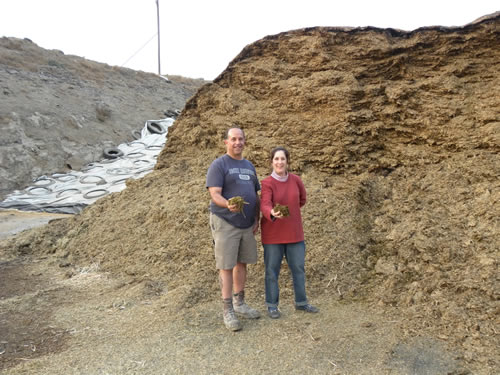
Dr. Bob & Wendy next to a large mound of silage. What is silage?
The milk is stored in large containers. On a big farm, a milk tanker truck comes 3 times per day (7 days per week) to pick up the milk. The tanker truck holds 50,000 pounds of milk (or about 6,000 gallons). So a big farm could produce about 16,000 gallons per day (or about 135,000 pounds). That’s a great deal of milk. The milk is hauled away, and taken to a processing facility where it is tested for fat content, protein content, and for the presence/absence of antibiotic residues (unacceptable – and milk rejected). The milk must be maintained (on farm, in transit, & at processor) at less than 42 degrees.
Cows are large animals, and they eat a lot. And they must eat a lot to produce all that milk. Cow nutrition is sophisticated. It must be to ensure that the cows are fed properly. Every large farm uses a bovine nutritionist (doctoral level individual) who carefully calculates all the rations.
Food & Feeding
Cows are fed 3 things – hay, grain, & silage. Huge amount of hay are stored in the hay barns, the bales sometimes weighing about 900 pounds each. Silage is created by a fermentation process in silos or special mounds or tubes. Silage uses a number of different products – corn, hay, alfalfa, oats, or wheat. Grains are a number of different types, and they are stored in huge grain bins. These food products are then mixed together in special, sophisticated ratios by a special truck which delivers the food to cows multiple times daily. The cows eat well.
Pregnancy
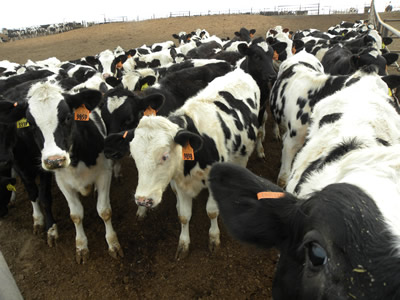 Most folks probably haven't given this much thought but, cows must be pregnant in order to produce milk.
Most folks probably haven't given this much thought but, cows must be pregnant in order to produce milk.
Again, most cows produce milk for about 3 years. The cow has one calf per year. That’s 3 calves in 3 years. In a year, the cow produces milk for 10 months, then takes a 2 month rest period (called the ‘dry period), during which no milk is produced.
The cows walk around freely in the barn – called a free stall barn.
The veterinarian comes to the large farms about once each 14 days. It is his/her job to
evaluate the reproductive status on any cows with issues. The veterinarian accomplishes this by means of doing a rectal examination – called a ‘rectal’. Clothed in overalls, and using a special very long glove (rectal sleeve), the doctor insets his hand into the rectum and then entire arm, right up to his shoulder. He can feel, palate, and evaluate the cow’s entire reproductive system. He can tell if the cow is pregnant, and he can tell almost exactly where she is in her reproductive cycle. He can determine disease processes as well.
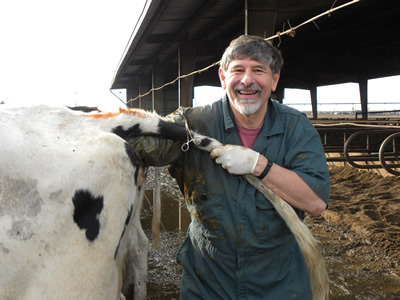 The Rectal Exam
The Rectal Exam
A proper rectal exam is a fairly sophisticated exam, and it is not learned so very easily. Due to the scope and stature of his bovine clinic, veterinary schools rotate some of their students through his clinic to learn diary medicine and science. Dr. Bob says to his students, that to do a good rectal exam, you must know & completely understand 3 things (bovine) – endocrinology, physiology, & anatomy. If you know this cold, you can do a good and thorough rectal exam. If you don’t know your stuff cold, then you can’t do it. Simple as that. Dr. Bob is a thorough but tough teacher!
This is what dairy bovine veterinarians do – among other things. They do lots and lots of rectals.
The reason to do rectal exams on dairy cows is to evaluate wellness and to establish their reproductive cycle stage so they can produce milk. It does not hurt the cow, and the information is invaluable.
In one day with Dr. Bob, he and & I each did about 200-300 rectal exams. You can see in the pics us doing that. Another person follows the doc from cow to cow, and he records the doc’s finding on each cow. All records are computerized.
It has been years since I have done a rectal. Sooo, being a good (and eternal) student, I did my homework in earnest. I reviewed and studied bovine endocrinology, physiology, and anatomy. I bought a book or two. And I spent hours reviewing the stuff. As it turned out, I didn’t do too bad (not great - but not too badly).
I just love cows. Gentle giants.
Enjoy the pics



